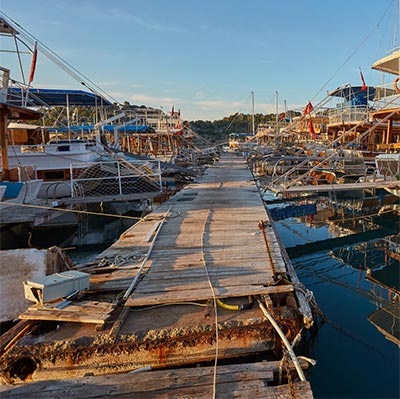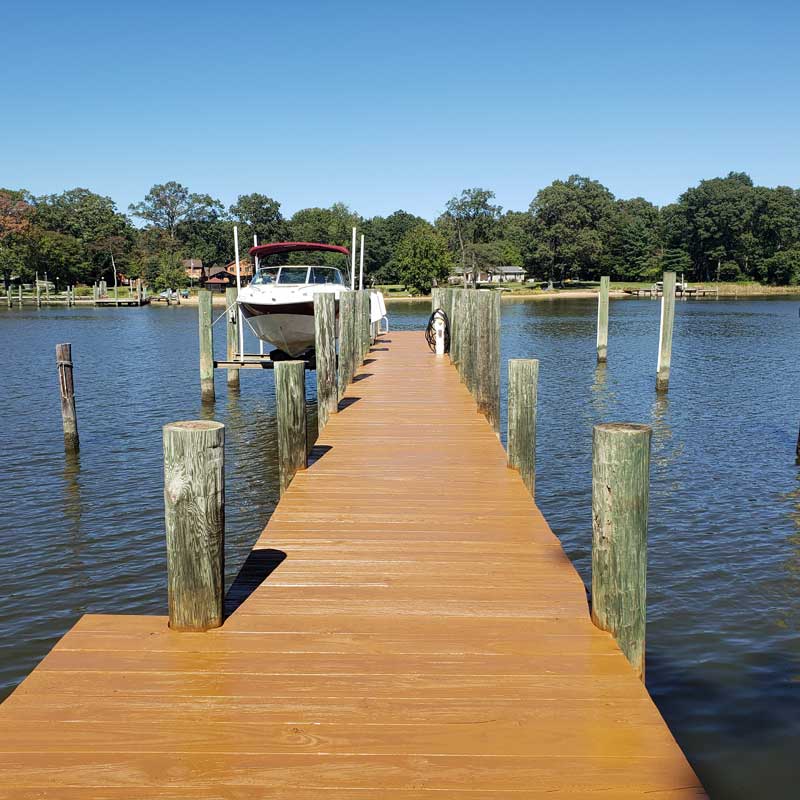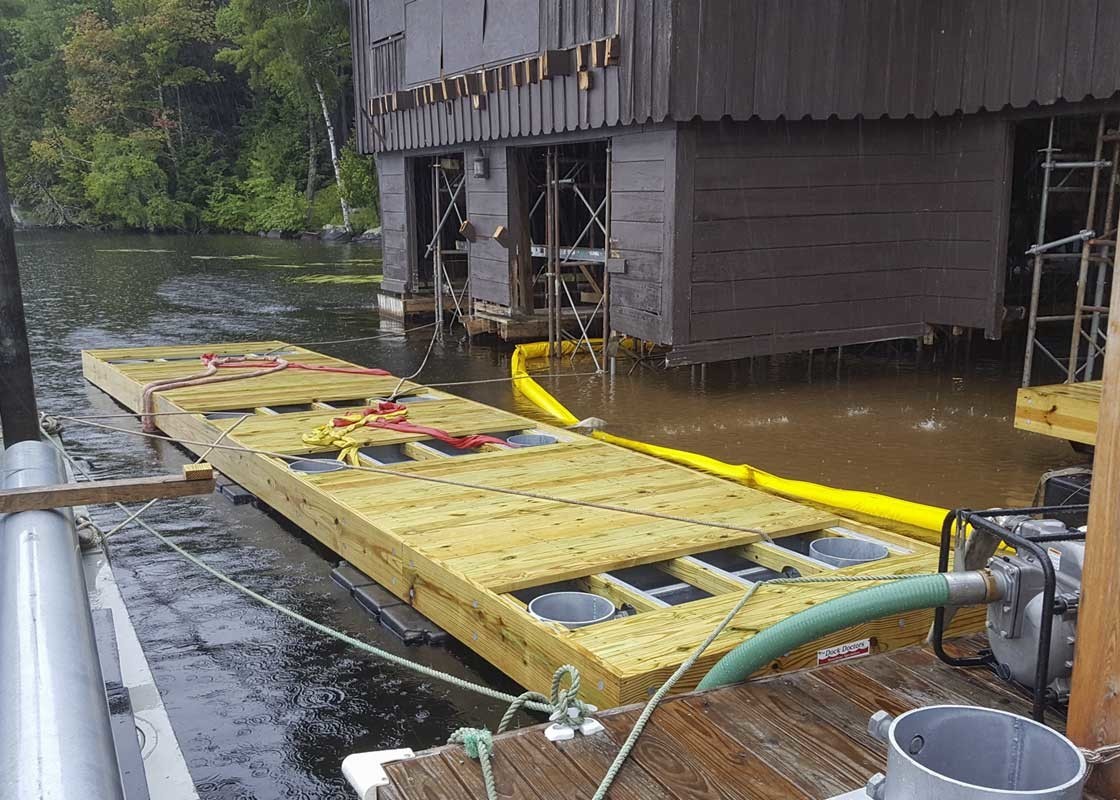Comprehending the Expenses Involved in Dock Repairs
Comprehending the Expenses Involved in Dock Repairs
Blog Article
Reliable Dock Repair Work Techniques: Guaranteeing Structural Stability
Making certain the structural integrity of docks via efficient repair techniques is vital for the longevity and security of aquatic centers. Consequently, selecting the appropriate repair work products, such as corrosion-resistant alloys and composite products, is important for longevity.
Assessing Dock Damage
Examining dock damages is an essential very first step in making sure the structural stability and security of any docking center. Secret aspects to take a look at include the dock's foundation, pilings, decking, and hardware (Dock Repairs).
Structural designers or certified inspectors typically carry out these analyses using specialized devices and techniques. Undersea assessments could utilize sonar devices or remotely ran cars (ROVs) to spot submerged damages. Above water, visual inspections are complemented by making use of moisture meters and other analysis devices to discover underlying concerns not right away noticeable to the nude eye.

Picking Repair Service Materials
Picking the proper repair work materials is an essential action in the dock remediation process, one that straight influences the durability and efficiency of the fixed structure. Product selection should be driven by variables such as ecological problems, load-bearing needs, and compatibility with existing dock elements. For circumstances, wood is a conventional option for anchors as a result of its all-natural resilience and visual charm. Nonetheless, picking the appropriate sort of wood, such as pressure-treated lumber or naturally rot-resistant varieties like cedar or teak wood, is crucial to withstand aquatic settings.
In enhancement to timber, composite materials are significantly prominent due to their longevity and reduced maintenance demands. Composites, commonly made from a blend of plastic and timber fibers, use outstanding resistance to rot, insects, and UV damage. For steel docks, picking corrosion-resistant alloys such as galvanized steel or marine-grade aluminum is important to stop rust and make sure structural stability in saline water conditions.
Epoxy resins and marine-grade sealers are crucial for fixing splits and sealing joints, offering a water-proof obstacle and enhancing the dock's general toughness. By carefully choosing high-grade materials, dock repair work can attain long-lasting results, thus protecting against future destruction and making certain safe, reputable usage.
Architectural Support Strategies
Effective structural reinforcement methods are important in making certain the security and longevity of dock repairs. One fundamental method involves making use of steel or composite reinforcement bars (rebar) within concrete structures. Rebar provides additional tensile stamina, avoiding fractures and distributing tons much more uniformly. This technique is particularly effective for docks subjected to heavy tons or extreme environmental conditions.
An additional important technique is the application of fiber-reinforced polymers (FRP) These products use high strength-to-weight ratios and excellent resistance to corrosion, making them excellent for strengthening wooden or concrete anchors. FRP can be applied in sheets or strips and adhered with epoxy resins to enhance architectural stability.
Bracing and securing systems likewise play a vital function in architectural support. Cross-bracing, making use of metal or wooden light beams, can combat lateral pressures, decreasing guiding and motion. Anchoring systems, such as helical piers or driven stacks, offer a secure structure by moving loads to much deeper, much more secure soil layers.
Last but not least, the combination of load-distribution plates can help disperse weight much more equally across the dock's surface area, reducing local tension factors. These methods jointly guarantee that anchors remain durable and risk-free, efficient in withstanding the roughness of their functional atmosphere.
Advanced Fixing Methods

Another sophisticated method involves undersea welding, which enables repair services to be carried out without the need to dewater the area. This approach is specifically useful for addressing structural issues in submerged dock parts, making certain marginal disturbance to procedures. Improved welding methods, combined with robotic systems, deliver accuracy and integrity, consequently prolonging the life expectancy of the dock.
Additionally, cathodic protection systems are implemented to stop corrosion in metal dock frameworks. By utilizing sacrificial anodes or impressed existing systems, these strategies successfully reduce the electrochemical processes that bring about material wear and tear.
Lastly, progressed tracking technologies, such as architectural health and wellness tracking (SHM) systems, provide real-time information on the condition of dock frameworks. These systems allow proactive upkeep and timely treatments, inevitably making certain the lasting architectural integrity of the dock.
Upkeep and Prevention
Maintenance and prevention are essential concepts that underpin the longevity and safety and security of dock structures. Normal examinations are critical, permitting early detection of deterioration, potential weaknesses, and environmental effects. A positive method, entailing regular checks for corrosion, rot, and structural changes, reduces expensive repair services and prolongs the dock's functional life.
Safety nets need to include using protective coatings to metal parts to guard against corrosion and making use of treated wood to stand up to degeneration. Additionally, making sure correct drain and ventilation can stop water buildup, which is a common reason for structural deterioration. Including quality materials and adhering to maker standards throughout construction and fixing stages also play important functions in boosting durability.

Educating employees in dock upkeep finest practices ensures consistent application of safety nets. Leveraging technical developments, such as drones reference for evaluations and sensors for real-time surveillance, can better improve maintenance efforts. By prioritizing maintenance and prevention, dock owners can ensure architectural stability, operational safety and security, and cost-efficient administration over the dock's lifespan.
Conclusion
In conclusion, preserving the architectural stability of aquatic centers requires extensive dock repair techniques. Advanced repair work strategies, paired with routine upkeep practices, ensure the dock continues click here for more info to be safe and functional under diverse ecological problems.
Making certain the architectural integrity of docks through effective repair work methods is vital for the long life and safety and security of aquatic centers.Picking the appropriate repair materials is a pivotal step in the dock restoration process, one that directly affects the durability and performance of the repaired structure.Effective structural reinforcement strategies are critical in ensuring the security and long life of dock fixings. By focusing on upkeep and prevention, dock owners can ensure architectural integrity, operational safety, and affordable administration over the dock's life expectancy.
In final thought, maintaining the structural honesty of aquatic facilities necessitates thorough dock fixing methods.
Report this page